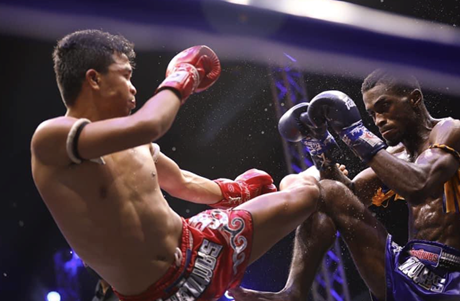Condition the Body to Lessen Injuries

When you begin training jiu-jitsu or any mixed martial arts, you will get sore. It doesn’t matter if you’re coming to class just to learn the basics of self-defense or planning to become a professional fighter. The good news is that conditioning creates results, and you will undoubtedly notice that you have more strength and endurance. What you may not notice is that conditioning can make you less susceptible to injury.
Conditioning for Strikes
Most of the moves that you learn in jiu-jitsu will be grappling techniques. However, as you evolve as a fighter you may want to learn how to strike better. Whether you want to better protect yourself on the street or train MMA, this is a totally normal progression.
For people who don’t have a lot of experience striking, the very first thing they will notice is that it hurts. After a while, whatever you are using to strike (fists, shins, knees) will start to hurt. The second thing you’ll probably notice is that more experienced fighters seem oblivious to this pain. Finally, you’ll get the feeling that they have denser bones.
These three things are related. As coach Firas Zahabi notes in the below clip, kicking a heavy bag will eventually make your shins become numb. This is true of other parts of the body. If you constantly punch a heavy bag, you will eventually not feel the sting on your knuckles like you once did.
Building Bone Density
More surprisingly, it is not just your imagination that people who train with a bag have denser bones. They do. Strength training does increase bone mass because bone density increases with physical activity that puts a constant load on the bone. For example, running is really good for building bone density in your leg bones because you are putting a constant load on these bone groups.
Similarly, martial arts that involve a lot of striking will also increase bone density, particularly in the areas where the force is at its highest concentrations (i.e., knuckles, elbows, knees). According to an article published by the University of Notre Dame, the increase in bone density after participating in martial arts was observed in all people, but it was especially noticeable in younger people because adolescence is a crucial period for the development of bone mass and bone structure.
An important thing to remember is that not all striking exercises are equal. The heavier the bag you’re using, the larger the mechanical load on the bone and the more you’ll increase bone density.
Better Bone Health
Like any exercise, it is important to know your limits. As anyone who has repeatedly hit a bag knows, the process of “toughening up” any part of your body hurts, and as anyone who has been within earshot of a personal training knows, “No pain no gain.” That may be true, but the pain of training and building density can be mistaken for the pain of stress fractures and muscle damage, and these are things that make you more susceptible to injury.
The best way to avoid these kinds of injuries is to look to distance runners for guidance. Anyone who is training for a marathon puts a lot of stress on their legs. This is no surprise because they are training to run a distance that literally killed the first person in recorded history to do it (Pheidippides, a professional runner who reportedly ran the 26.2 miles from Marathon to Athens to deliver news of a victorious battle, and then dropped dead).
If these runners try to increase the intensity of their training too quickly, it can lead to shin splints or stress fractures. If they then continue to train through the pain, the injury will not have time to heal, and they will be more susceptible to injury.
In other words, if you start to notice pain or swelling that seems out of the ordinary, stop what you are doing and rest. If the pain continues after resting for a few days, see a doctor. In all cases, it is better to address a minor injury early and be sidelined for a few days than to wait for it to become a major injury and be sidelined for a few months.
Spine Health
Finally, Firas notes that bone health extends beyond your striking bones. Your spine is possibly the most important bone in your body and strengthening it will not only improve your posture but help you avoid injuries to your back. Cardiovascular exercises that are done in an upright position, like jogging or running stairs, also put a load on your spine and increase the bone’s density. Your abdominals are also meant to keep your back straight and to take tension off the spine.
Therefore, having stronger abs is not just about developing your vanity muscles or helping to absorb blows your midsection; strength in this muscle group can also help you avoid back injuries and time away from jiu-jitsu class.

